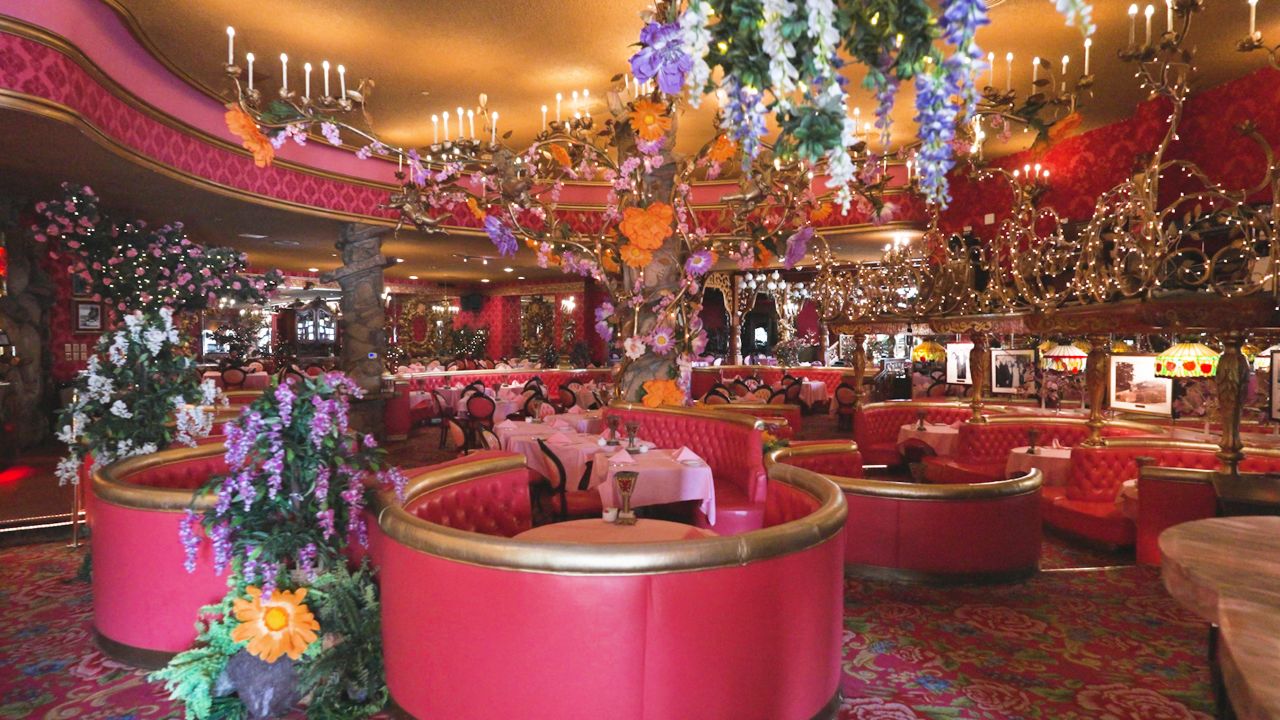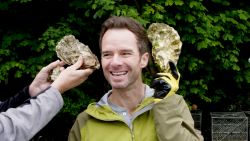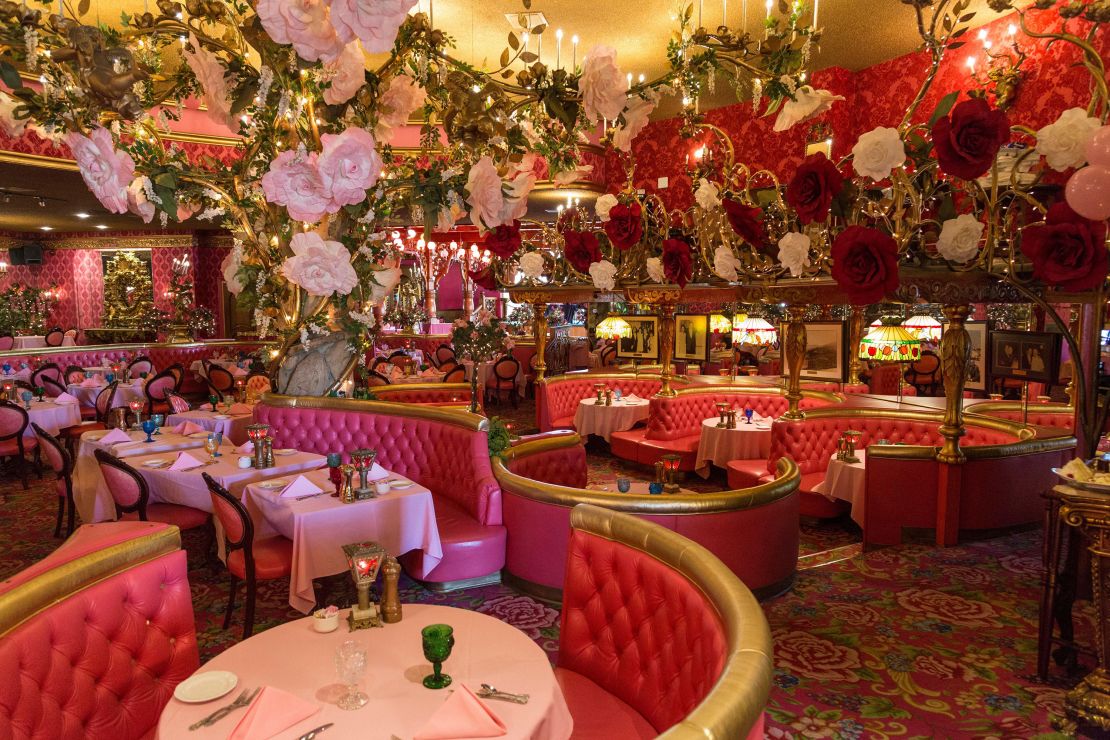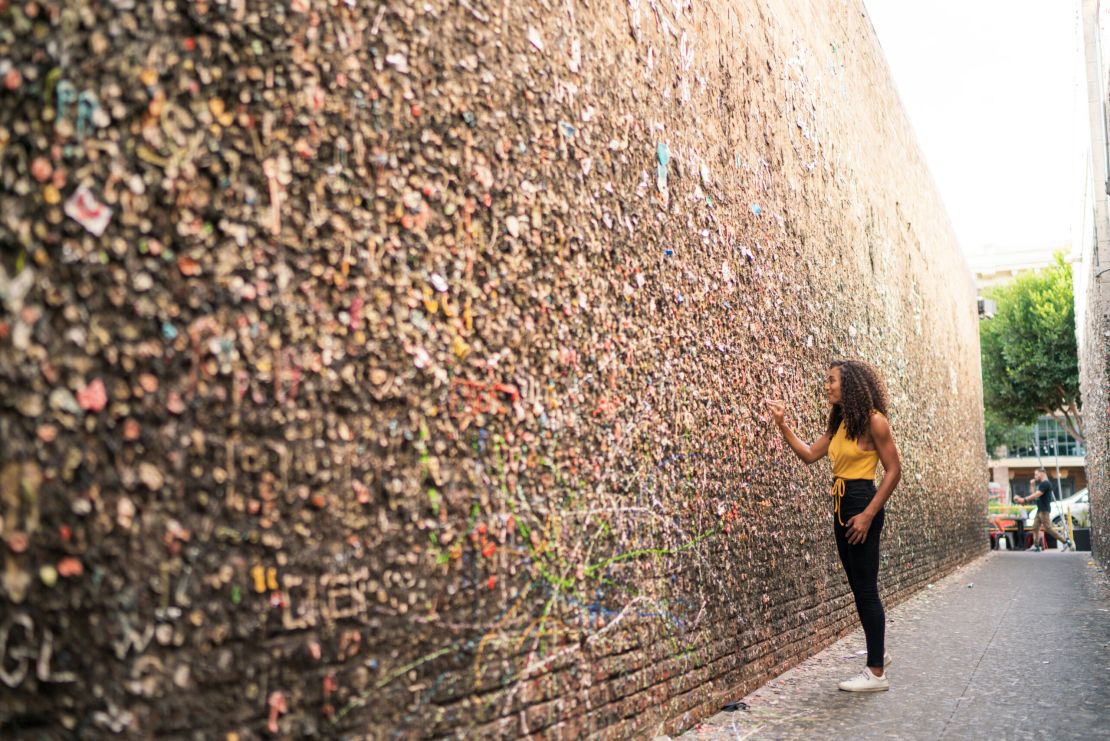










Wander through quaint downtown streets or visit retro treasures such as Sunset Drive-In Theater, and you’ll quickly understand why San Luis Obispo is nicknamed SLO — pronounced slow.
SLO has small-town charm. And for those in search of the original California dream, this paradise destination — only a short hop from vineyards and Pacific Coast beaches — offers plenty of postcard moments that hark back to classic Golden State tourism.
While it offers a window on the past, San Luis Obispo isn’t standing still. New developments and modern amenities give visitors to this Central Coast town access to big-city offerings.
more america's best TOWNS to visit 2024
Head to the center of town any day of the week, and you’ll find locals, visitors and SLO’s Cal Poly students flitting between cafes, old record stores, boutique jewelry shops, art galleries and big-name chains. They can grab a bite at one of the town’s many long-time restaurants such as Giuseppe’s Italian or Linnaea’s Cafe or try a new spot like Ebony, serving Ethiopian cuisine.
Downtown SLO is centered around Mission San Luis Obispo de Tolosa, a Spanish mission founded in 1772. The state’s missions figure prominently in the formation of California, giving rise to cities including San Diego, Santa Barbara and San Luis Obispo. On any given afternoon, you’ll find couples relaxing on the grass in front of the mission and kids throwing coins into its iconic bear fountain.
A collection of museums such as the History Center of San Luis Obispo County and the San Luis Obispo Children’s Museum is scattered nearby, making up the city’s cultural corridor.
Part of this group is the free-entry San Luis Obispo Museum of Art (SLOMA), which is undergoing a “renaissance,” as Executive Director Leann Standish puts it.
The building is decorated with an exterior mural that changes annually, featuring a different artist each time. The museum rotates exhibits through its three galleries, often coordinating show openings with its first Friday of the month events, which include wine, a DJ and “the sexiest crowd in SLO,” Standish says.
San Luis Obispo, CA: No. 5 on America's Best Towns to Visit list
Reminders of the past
Around the block from the museum, a building on the corner of Palm and Chorro streets in the Chinatown Historic District offers a small window into another chapter of the city’s past.
It was here that a Chinatown neighborhood grew in the 1870s. In the 19th century, SLO was home to a significant population of Chinese laborers who helped build roads and railroads, but only a few buildings from the time remain. The most prominent is the historic Ah Louis Store, which celebrates its 150th anniversary this year.
The store, established by Chinese-American businessman and community leader Ah Louis (or Wong On), was at the center of life in Chinatown until about 1930, according to National Register of Historic Places documents, and it was home to Ah Louis and his family. The celebrated structure — a Victorian Italianate-style building — with its big red sign, plaster façade, long windows, turquoise accents and red brick sides, is currently leased by an event planning and supply company.
Across the street is Mee Heng Low Noodle House, another classic spot with avocado green and vermilion red tiles covering the front of the restaurant. It’s said to be one of the oldest Chinese restaurants in the United States, although chef and co-owner Russell Kwong can’t say for sure. Kwong’s is the third family to own the restaurant since it opened in 1927, and he said that except for a brief closure for renovations, he believes it’s been up and running for the past 96 years.
The menu of traditional Chinese dishes is influenced by Kwong’s grandmother’s recipes, and the kitchen is typically a one-man show with Kwong doing most of the cooking — the restaurant is especially known for its popular chow mein.
Halfway to LA
About a mile northeast of the restaurant lies another nod to SLO’s past — the site of the Milestone Mo-Tel, later the Motel Inn, reputedly the world’s first motel, or “motor hotel” when it opened in the 1920s.
Early 20th-century developers picked SLO to build the lodging because it was halfway between Los Angeles and San Francisco, perfect for drivers needing an overnight stop. Today, portions of the Spanish mission-inspired structure remain and there are plans to redevelop the property into a new hotel that preserves the historic structure.
SLO has another notable accommodation option where guests can stay right now.

Madonna Inn on the other side of town is one of the city’s quirkier classics. The gaudy pink inn and event space opened its doors in 1958 and now offers 110 guest rooms that are all individually themed. Visitors can choose from options such as the Western-style “Pony Room,” with a carousel horse prancing in the corner, or the animal print-covered “Caveman Room,” which sports rock walls and a stone shower.
Also in SLO’s quirky column, visitors will want to stroll down Bubblegum Alley in the heart of downtown. True to its name, it’s a 70-foot long, 15-foot tall alleyway entirely covered in chewed gum. While its origins are unclear, Bubblegum Alley dates to the early 1970s and has since become a tourist attraction with bubblegum graffiti of all shapes and sizes.
Road trippers who stop in for a night or two will find natural beauty alongside SLO’s historic sites and curiosities. San Luis Obispo is surrounded by mountains and green space, with trails for hiking and biking.
“I love having so much nature around, while still being in the center of SLO,” said Christina Hinson, a civil engineer for the state of California who lives and works downtown.
South of town, Edna Valley offers tourists sprawling vineyards and is a zone particularly known for its pinot noir and chardonnay. The Claiborne & Churchill and Tolosa wineries are worth checking out
As the county seat of San Luis Obispo County, SLO is surrounded by several smaller cities, each with its own offerings and personality
In South County, visitors will find a collection of smaller beach towns, including Pismo Beach, a laid-back spot ideal for strolling along the pier and watching the surfers catch waves below. While you’re there, stop by Old West Cinnamon Rolls for one of its cream cheese frosting-covered specials or join the regulars grabbing breakfast from one of the many mom-and-pop eateries that fill downtown.
At the edge of the surf town lies the Pismo State Beach Monarch Butterfly Grove — a patch of tall trees named for the more than 10,000 butterflies that overwinter here, clustering onto branches and turning the grove into a throng of orange and black from November to February.
North County includes Paso Robles, a prominent player in California’s wine scene. Morro Bay State Park and Montaña de Oro State Park are west of SLO.
The slowed-down lifestyle in San Luis Obispo gives tourists a break from the hustle of big cities, while its central location grants easy access to those craving more action. The SLO County Airport makes it even simpler to plan a weekend getaway here. It now offers regular flights to Portland, Seattle and Dallas-Fort Worth, among other destinations.

Small-town charm, big-city benefits
While some long-time businesses shuttered during the pandemic, new growth has been quick to sprout. The city has seen an influx of people, including remote workers, bringing demand for more diverse culinary and entertainment options.
Development is continuing to spread beyond the downtown area with trendy gathering spots bringing crowds to parts of the city previously known as industrial zones.
Among them, the San Luis Obispo Public Market has been drawing a lot of attention lately. Guests can pick between family-friendly indoor and outdoor seating areas with vendors offering everything from fresh juices, ice cream and craft beer to Thai food and tacos.
Duncan Alley, one of SLO’s newest additions, has turned an aging industrial complex into a hot spot for wine, cider and beer companies to offer tasting rooms while still manufacturing on-site.
The upside to all this innovation is that residents and visitors now have access to “big city” offerings without leaving town. SLO’s local performance venues are starting to attract more well-known artists, and there is a wider variety of restaurants, including Shekamoo Grill for Persian cuisine and Kor Kitchen for Afghan food.
Downtown SLO also sports the recent metropolitan addition of two new resorts — Hotel San Luis Obispo and Hotel Cerro — that offer dining, rooftop bars and spa services.
While new businesses appear around town, SLO’s well-known and beloved attractions continue to draw crowds. The Farmers’ Market fills downtown streets every Thursday evening with more than 100 vendors selling fresh food and produce.
The longest lines are always for the barbecue, and those with the patience to wait will find out why. This part of the Central Coast is famous for its “Santa Maria-style” beef tri-tip barbecue, and it doesn’t disappoint. Insider tip: Order a tri-tip sandwich from Firestone Grill or F. McLintocks and smother it in barbecue sauce. You’ll get messy, but look like a local as you wipe sauce from your face.
ESSENTIAL SAN LUIS OBISPO
- EAT: The Creamery, open-air market set in an old dairy
- SLEEP: Madonna Inn, legendary California hotel with unusual rooms
- DRINK: Koberl at Blue, fancy cocktails and fine wines in a historic building
- PLAY: Thursday Night Farmers’ Market, five blocks of food, crafts and entertainment
Sunset Drive-In movie theater is another classic SLO staple. Showing a double feature most nights of the week, this no-frills venue is one of the last remaining drive-in theaters in California. Everything from the payment method (cash only) to the retro diner vibe of the snack bar and the theater’s enormous neon sign reading “Sunset” will make you feel like you’ve stepped back into the 1950s.
Viewers are scattered around the parking lot, bundled in truck beds or sitting in front of their cars wrapped in blankets, watching as dusk turns to night behind the enormous drive-in screen. They hum along as retro animations start to play — dancing and singing the familiar tune “Let’s all go to the lobby, let’s all go to the lobby, let’s all go to the lobby-y-y to get ourselves a treat.”
A treat is what visitors are in for when they spend a little time here getting to know laid-back SLO.
“The community aspect is really big in SLO, it’s a very deep-rooted town,” said M. Faríd Shahíd, a real estate broker and partner of a local real estate brokerage. “One thing everyone notices right away is that the quality of life, as well as the quality of social interactions, are significantly higher out here than in bigger cities.”
He added that with its easy access to farm-to-table food, year-round good weather and the nearby trails and beaches, SLO is an ideal travel destination and naturally encourages a healthy lifestyle.
That is, as long as you don’t count all of the tri-tip sandwiches (and cinnamon rolls, and Chinese food, and…) you’ll be eating. But we’ll let that slide.
Next town: Flagstaff, Arizona is No. 6
How this Grand Canyon pit stop became a destination in its own right.
Danielle Ames is a freelance writer and editor, born and raised in San Luis Obispo, California. Follow her work via Instagram or her newsletter Not Enough Middle Fingers.










